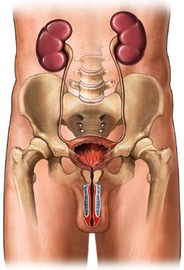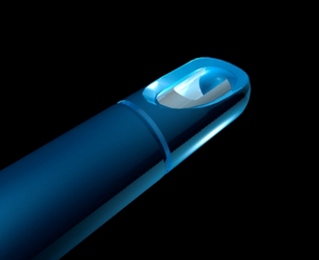Robotic Urologic surgery
Robotïzïrovannaya cardiac surgery – Robotic surgery in heart surgery
Robotizirovannaya surgery – brief overview
Robotizirovannaya surgery chest
Description robotic urologic surgery
При проведении роботизированной урологической операции врач использует манипуляторы, allowing to carry out surgery through small incisions (so called “keyholes”).

Reasons for robotic urologic surgery
Examples urological surgery, are successfully carried out using this method:
- Prostatectomy – deletion of part or all of the prostate cancer detection prostate;
- Pieloplastika – operation with the anomalies of kidney and ureter (muscular tube, which runs from the kidney to the bladder);
- Cystectomy – to remove all or part of the bladder. It is used to treat bladder cancer;
- Nephrectomy – removed all or part of the kidney due to renal cancer, kidney stones or kidney disease;
- Reimplantation mochetochnika – pruning and re-sewing the ureter to the bladder, to impede the flow of urine from the bladder back into the kidneys;
- Procedures, requires accuracy during dissection and suturing (eg, alter the ureter into the bladder another place).
Compared to traditional procedures, operation using robotic surgery:
- It reduces the amount of scarring;
- Reduces the cooldown;
- Reduces the risk of infection;
- It reduces blood loss;
- Reduces body injury;
- Reduces the duration of stay in hospital.
Возможные осложнения роботизированной урологической операции
Complications are rare, but no procedure does not guarantee the absence of risk. If you plan to robotic urologic surgery, you need to know about possible complications, which may include:
- Damage to nearby organs or tissues;
- Infection;
- Bleeding;
- The negative reaction to anesthesia;
- The need to move during operation of traditional surgical techniques (eg, laparoscopic or open surgery);
Some factors, that may increase the risk of complications:
- Existing heart or lung disease;
- Advanced age;
- Diabetes;
- Obesity;
- Smoking;
- Alcohol addiction;
- The use of some drugs.
How is the robotic urologic surgery?
Preparation for the procedure
Depending on the reason for the operation, your doctor may prescribe or to hold the next:
- Medical checkup;
- Blood and urine tests;
- Electrocardiogram – test, which records electrical currents, passing through the heart muscle;
- Intravenous pyelogram – type of X-ray, whereby pictures kidney, ureter and bladder are performed after injection of radiopaque substances into the blood stream;
- Retrograde pyelogram – type of X-ray, wherein images ureters and bladder performed after administration of radiopaque substance into the bladder;
- X-ray of the abdomen – Photos pochek, mochetochnika, Bladder;
- Doppler – test, which uses sound waves to visualize internal organs;
- Computed tomography of the abdomen – such as X-rays, that uses a computer to produce images of structures inside the body;
- MRT – test, which uses powerful magnets and radio waves to produce images of structures inside the body;
- Cystoscopy – tube, оснащенная камерой и источником света используется для осмотра мочеиспускательного канала и мочевого пузыря изнутри.
In the run-up procedure:
- Consult your doctor about the drugs taken. A week before surgery you may be asked to stop taking some medicines:
- Anti-inflammatory drugs (eg, aspirin);
- Blood thinners, such as clopidogrel (Plaviks) or warfarin;
- As a physician you need to take antibiotics;
- Follow a special diet, as indicated by a physician;
- Вечером перед операцией примите душ с использованием антибактериального мыла;
- We need to organize a trip for the operation and back home from the hospital. Besides, arrange home help for the recovery period;
- In the evening before the operation can be only a light meal. Do not eat or drink anything the night, unless permitted by a doctor.
Anesthesia
При проведении роботизированной урологической операции используется general anesthesia, which blocks and supports the patient's pain during the operation in sleep.
Описание процедуры роботизированной урологической операции

The physician makes a few small incisions in the skin at the site of, where the operation will be carried out. In most cases, the operated region is injected carbon dioxide. Это позволит врачу лучше увидеть структуру внутренних органов.
Затем врач вводит тонкую трубку, which is called an endoscope, с камерой и источником света на конце через один из разрезов. Камера будет предавать трехмерное изображение внутренних органов на экран. В другие разрезы будут вставлены манипуляторы с инструментами для захвата, cutting, dissection and suturing tissue:
- Tongs;
- Scissors;
- Dissector;
- Scalpels.
Sitting at the controls next to the operating table, the doctor will see on the monitor a three-dimensional image of organs inside the body. The control console has a joystick to control the manipulators. With their help, the doctor controls the position of the camera and the operation of surgical instruments..
The surgeon's assistant is near the operating table and adjusts the camera and instruments on the manipulators as needed. After the operation is completed, хирургические инструменты и манипуляторы будут извлечены, the incision is closed.
Сколько времени займет роботизированная урологическая операция?
Usually 2-4 hours (depending on the procedure).
Роботизированная урологическая хирургия – Will it hurt?
You will experience pain and discomfort during recovery. The doctor will give you pain medicine. You may also feel some “inflation” or pain in your shoulder from the gas, injected during the procedure. The discomfort may last up to three days.
Среднее время пребывания в больнице после роботизированной урологической хирургии
About 1-2 day (depending on the procedure).
Уход после роботизированной урологической операции
When you return home, Follow these steps:, to ensure the normal recovery:
- После некоторых процедур устанавливается катетер для отвода мочи. You will be instructed, как ухаживать за ним;
- We need to take antibiotics, to prevent infection, if it is indicated doctor. Вы также должны избегать приема других лекарственных средств без разрешения врача;
- Отдыхая, Keep your feet in a raised position, to avoid the formation of blood clots;
- Избегайте принимать ванну в течение первых двух недель после операции;
- Wash your incisions with mild soap and water.;
- We need to ask the doctor, when it is safe to shower, bathe or expose the surgical site to water;
- Drink plenty of fluids. Это поможет очистить мочевой пузырь;
- Avoid constipation. Ешьте богатую клетчаткой пищу, drink plenty of water. Use, if necessary, смягчители стула;
- Избегайте напитков с кофеином, alcohol, острой пищи или других пищевых продуктов или напитков, которые могут вызвать раздражение желудка, bowel, или мочевыводящих путей;
- Perform daily walks. This will help restore;
- It is necessary to restrict certain types of activities (eg, driving, work, athletics), before the end of the recovery period;
- Be sure to follow your doctor's instructions.
Полное восстановление обычно занимает около 3-6 weeks.
Связь с врачом после роботизированной урологической операции
After returning home, you need to see a doctor, If the following symptoms:
- Катетер прекращает дренировать мочу или выпадает;
- Difficulty urinating;
- Тяжелые кровотечения или сгустки крови в моче;
- Pain, burning, частые мочеиспускания;
- Signs of infection, including fever and chills;
- Redness, edema, increased pain, bleeding or discharge from the incision;
- Вздутие и боли живота;
- Constipation, nausea, vomiting, or diarrhea;
- Cough, shortness of breath or chest pain;
- Pain and / or swelling of the legs, calves and feet;
- Other worrisome symptoms.
